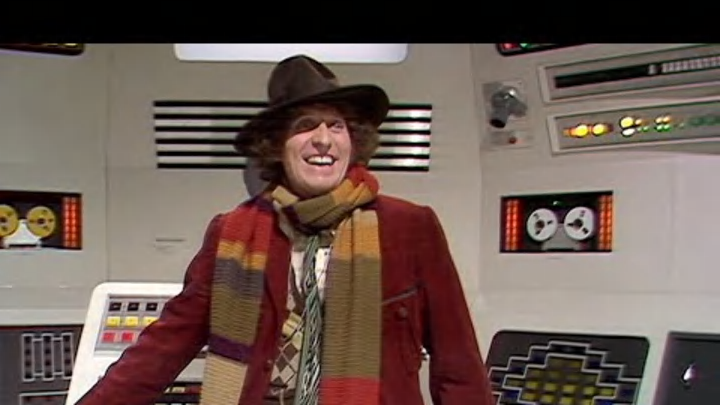On Dec 28, 2024, we celebrated the 50th anniversary of Tom Baker’s first full appearance as the Fourth Doctor. His debut story “Robot” is still a fun watch. It was the final story made by the previous production team of producer Barry Letts and script editor Terrance Dicks. As a result, it was a straightforward UNIT story, complete with CSO (Color Separation Overlay/greenscreen) making the titular robot giant at the end. It was an easy light-hearted debut for the new Doctor. But then came “The Ark in Space”, and that’s when we saw a completely different style for Doctor Who.
From the opening episode, “The Ark in Space” was distinctly darker and more horrific than what had come before. This was primarily because of new incoming producer Philip Hinchcliffe, who wanted the show to appeal to adults more. Not so much more that the show would forget the children it was meant to appeal to, but at least making the show dark enough and mature enough for adults to enjoy.
Honestly, they couldn’t have asked for a better example than “The Ark in Space”. It still amazes me that this was only the second Fourth Doctor story broadcast, as it's such a perfect serial. It’s arguably not just one of his very best stories – it’s also one of the greatest stories in Doctor Who history. (Spoilers going forward.)
A perfect four-part serial
One way that “The Ark in Space” stands out is that it’s one of the best uses of the four-part serial format. Four episodes almost feels like a strange number for a serial. Three seems more convenient: beginning, middle, end. Four sounds like one episode too many, and indeed, many stories would drag or slow down around the third episode. And yet four episodes was the most popular number to tell a story in Doctor Who, at least in the Classic Series.
However, writer Robert Holmes often knew how to use the format, especially in this story. In the first episode, he makes the simple choice of focusing only on the TARDIS crew. For the entire first episode, the only living (or at least, non-stasis) people that we see are the Doctor, Sarah Jane, and Harry. It’s a great way of creating a strong sense of mystery, as the TARDIS crew arrives on a silent space station in the far future, with no sign of the human race. At least, not at first.
Most of the questions are answered by the end of the first episode, and we’re gradually introduced to some of the survivors in the second. But we’re also introduced to the horrific alien threat: the Wirrn. A parasitic organism that spreads by infecting and transforming others, the Wirrn have only appeared once on television, and yet they still stand out as a brilliantly conceived monster.
Body horror
The cliffhanger to part 2 – of Noah slowly taking his hand out of his pocket and revealing a horrific, alien mass that has replaced it – is one of my all-time favorites. Admittedly, it’s clear to see that the hand is just wrapped in bubble wrap that’s been painted green. But the first time I watched this, eight-year old me was horrified.
That’s one more thing that stands out about this story: the horror. I’m a big fan of horror, and I think that’s true for many fans of Doctor Who, especially if Tom Baker’s their favorite. “The Ark in Space” really helped to set the tone of the show going forward. The Wirrn weren’t just scary because they were monsters. No, what made them truly horrific was that you could become one of them.
For myself – and possibly, many other fans – “The Ark in Space” was their first introduction to the concept of “body horror”. I’ve seen more horrific and disgusting examples since then, such as The Thing and The Fly. But “The Ark in Space” was such a great introduction to the concept. And not just because of the horror itself.
Humanity
This is the last reason why “The Ark in Space” is such a great story: its exploration of humanity. Through the characters of Noah and Vira, we’re introduced to a version of humankind that's seemingly cold, distant, and emotionless.
But across the rest of the story, each character is reminded of their humanity in different ways. Vira gradually shows more and more emotion throughout the story, both good and bad, while Noah is reminded of his own humanity by having it gradually taken away from him. His final choice – destroying the Wirrn and sacrificing himself to save the rest of humanity – is a perfect way to end the story.
50 years on, “The Ark in Space” still stands out as one of the quintessential Doctor Who stories, especially in terms of horror. It has monsters that are truly horrific and features some mature themes, such as gradually losing both your body and your mind. But it explores these themes in a way that’s not too much for the younger audience (although it did come close – a moment where Noah was begging Vira to kill him was cut for being too intense). A story that balances everything right, "The Ark in Space" an absolute classic, in every sense.
